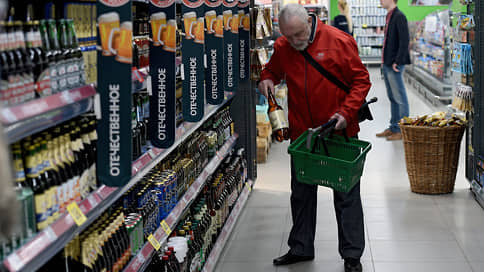Sales of beer in plastic containers are declining
[ad_1]

The main packaging format in terms of sales volume on the beer market—plastic bottles—is losing ground. In 2023, sales of beer in PET containers decreased by almost 5% in volume terms, while the share of glass bottles and aluminum cans increased. Market participants explain the trend by the switch of consumers of inexpensive beer in plastic bottles to other alcohol and the growing demand for premium brands.
Sales of beer in plastic bottles in Russia in 2023 decreased by 4.8% in volume terms and by 1% in money, while a year earlier, on the contrary, there was an increase, according to a retail audit by NielsenIQ. So, in 2022 they grew by 2.5% and 18.3%, respectively.
At the same time, sales of beer in glass bottles for 2023 increased by 7.2% in volume and by 12.1% in money, in aluminum cans – by 4.3% and 8.2%, respectively. As a result, the share of natural beer sales in PET containers on the market in 2023 decreased to 35.4% compared to 37.7% a year earlier. The share of aluminum cans increased from 30.4% to 31.4%, and glass bottles – from 23.9% to 25.3% year-on-year, according to NielsenIQ.
Igor Khavsky, co-owner of the distributor SWAM Group and the Gletcher brewery, explains that lines for bottling beer in PET bottles were the first to appear in factories, but beer in such packaging has a shorter shelf life, and these are, as a rule, brands from the economy segment. Nikolai Zhelagin, founder of the “Taking a Day Off” chain of beer stores, notes that beer in PET bottles is bought mainly by consumers who are undemanding about the taste of the drink and who could switch to other alcohol. According to him, bottling in PET containers, first of all, allows brewers to increase production volumes and reduce costs.
Metro explained that the restoration of logistics has led to an increase in beer imports to Russia, and such items are rarely bottled in PET bottles. The chain is also seeing increased demand for craft beer, which is typically available in aluminum cans and glass containers. In addition, Metro clarified, in 2022 there were problems with the availability of aluminum cans, which have now been partially resolved. Lenta noted a slight decrease in demand for beer in PET bottles in hypermarkets, but sees an increase in sales in its supermarkets. The X5 Group (“Pyaterochka”, “Perekrestok”), “Magnit”, and the “Red & White” chain did not answer “Kommersant”.
President of AB InBev Efes (Velkopopovicky Kozel, “White Bear”) Oraz Durdyev explains the decline in sales of beer in PET containers by the increase in demand for beer in a higher price segment. “With limited travel and spending options, consumers want to pamper themselves in an affordable way,” he says.
The United Breweries holding company (Okhota, Bochkarev) also associates the trend with the return of consumers to premium beer brands, expecting further development of such varieties and packaging formats in 2024.
General Director of MPBK “Ochakovo” (brands “Khalzan”, “Barley Ear”) Yuri Antonov predicts a continuation of the trend towards a decrease in the share of beer consumption in PET bottles. According to him, the profitability of brewing companies does not particularly depend on the type of packaging, but in aluminum cans and glass bottles the profitability is slightly higher.
Baltika (Arsenalnoye, Zatecky Gus) says that the volume share of PET bottles in the company’s sales in 2023 increased by 0.3% year-on-year, and the dynamics of the market as a whole may be associated with “turbulent fluctuations” . The manufacturers of PET bottles Europlast and Uniplastrus did not respond to Kommersant.
In soft carbonated drinks, the share of sales in aluminum cans is also growing, says Maxim Novikov, president of Soyuznapitki. However, he clarifies, the trend is constrained by the high cost of bottling lines, limited packaging production capacity and competition for cans from brewers and winemakers.
According to the Aluminum Association, 10.4 billion aluminum cans were produced in the EAEU in 2023, of which two-thirds were purchased by brewing companies. In 2024, the capacity in the EAEU, according to the association, should increase by 2.6 billion cans per year.
[ad_2]
Source link





